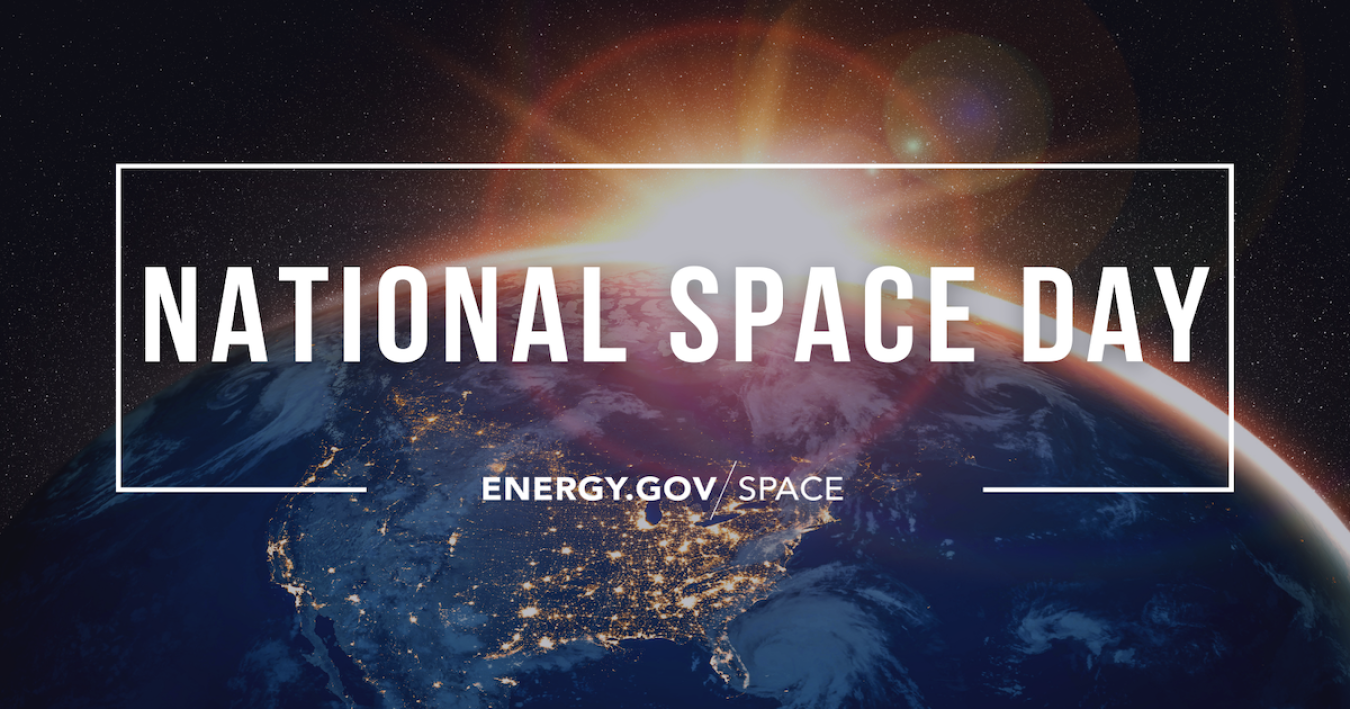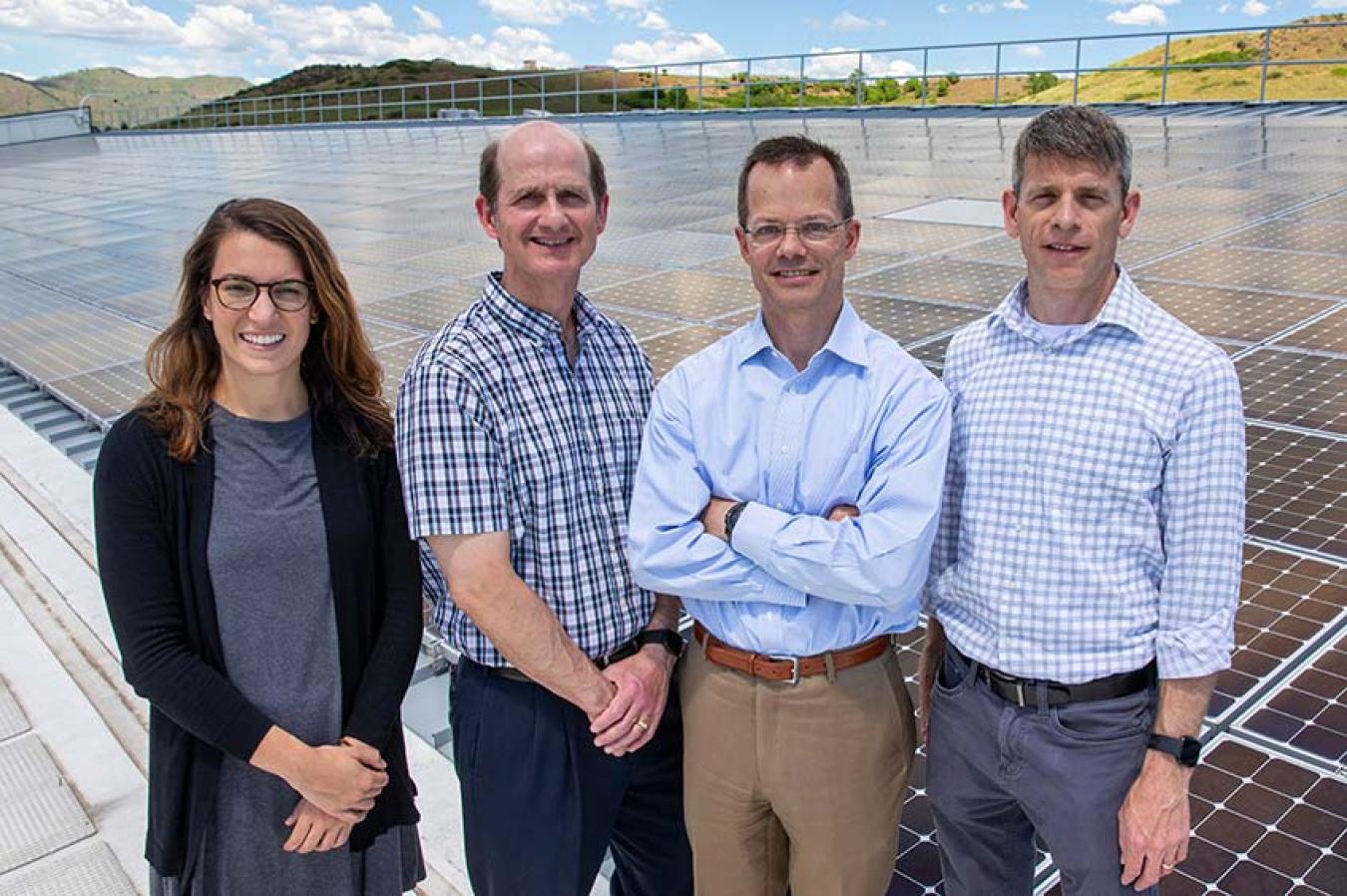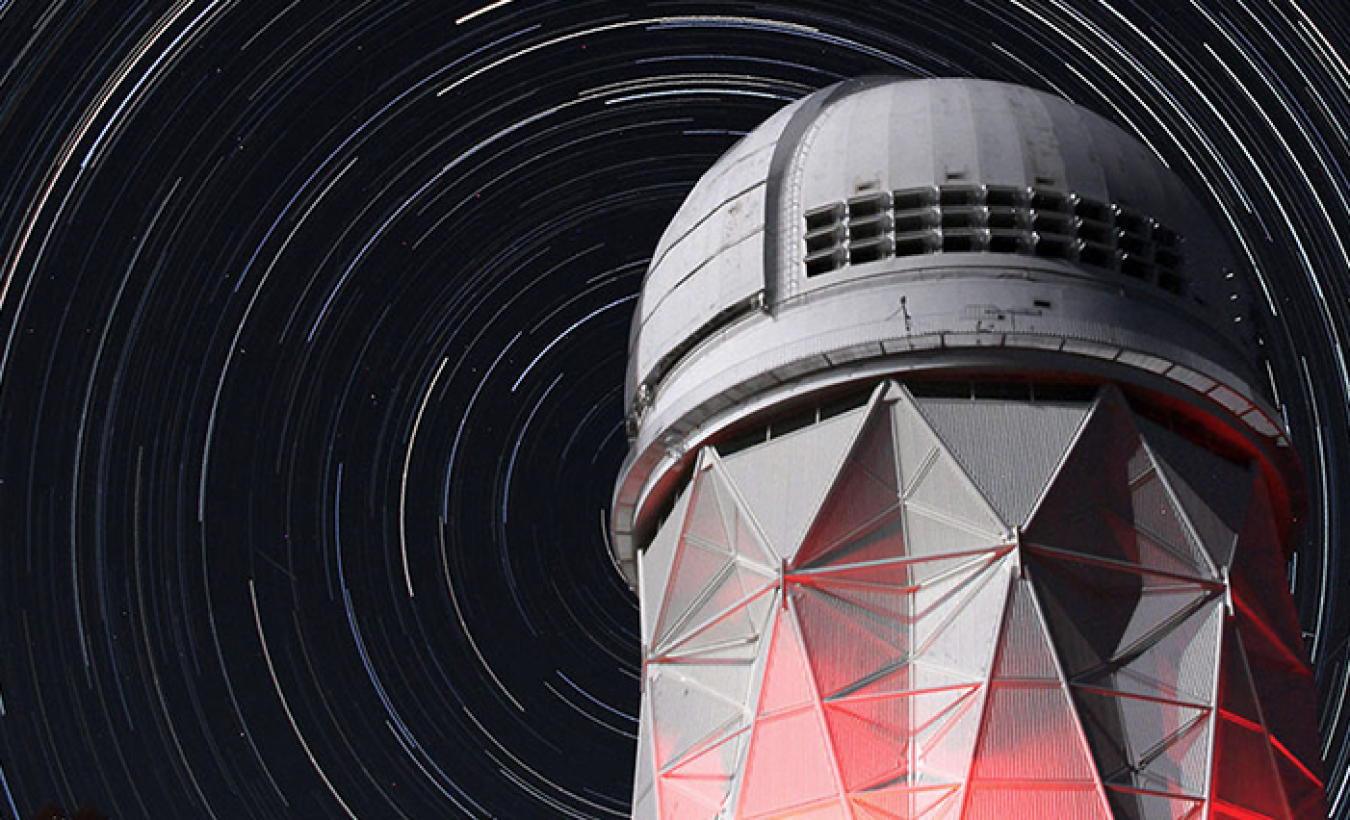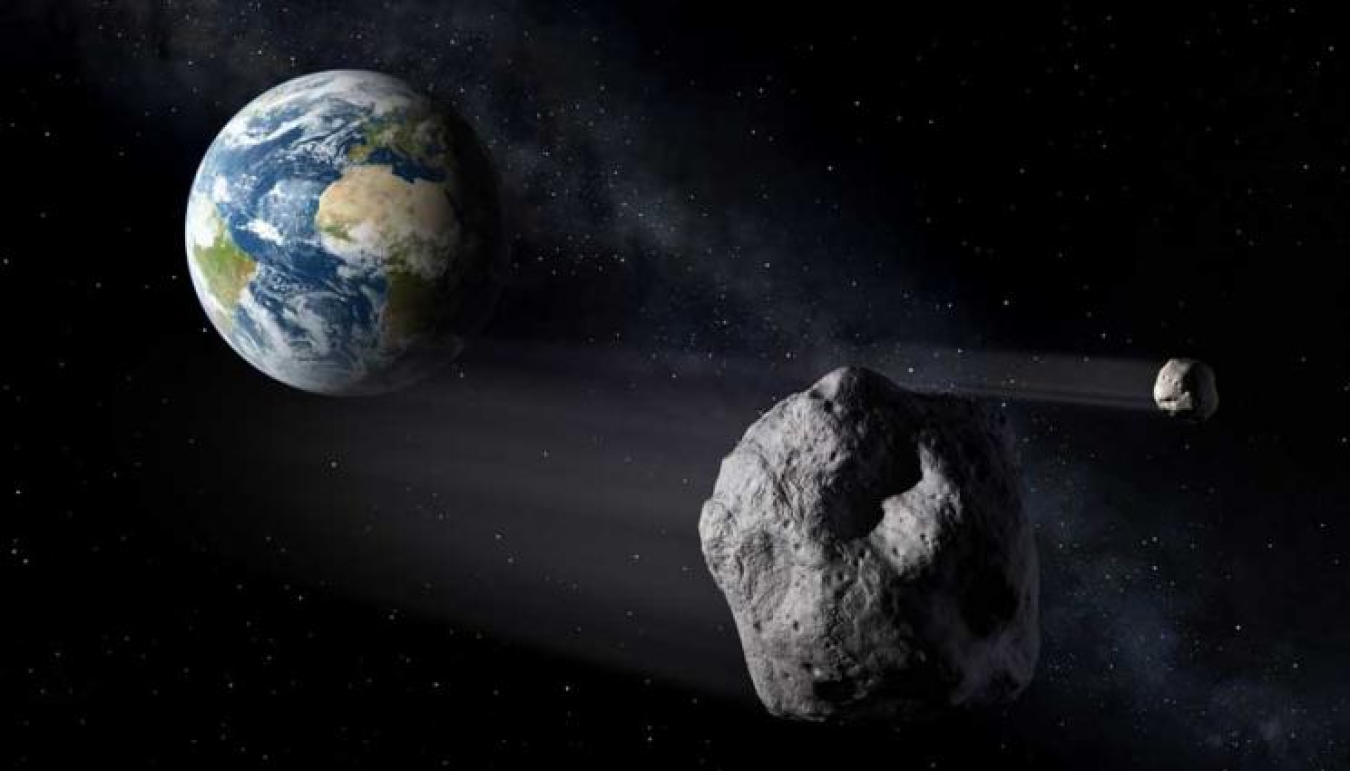May 7 is National Space Day, so celebrate by taking a moment to learn about what the government here on Earth is supporting for Space.
May 5, 2021
Did you know that the Department of Energy brings solutions, scientific expertise, and our powerhouse instruments and Labs to space exploration and research?
May 7 is National Space Day, so celebrate by taking a moment to learn about what your government here on Earth is supporting for Space.

Meet Women in Space Careers
We collaborated with CBS’ Mission Unstoppable, a partnership with the IF/THEN Initiative to promote women in science, tech, engineering, and math. Dr. Kirsten Howley of DOE’s Lawrence Livermore National Laboratory will join Mission Unstoppable’s Twitch Channel on Thursday May 6 at 11am PST to educate us on asteroid hazard mitigation.
Mission Unstoppable will also post a series of videos highlighting over 30 women in space on May 7, including some of DOE’s own:
- Amanda Gates, mechanical engineer in the space power department at DOE’s Idaho National Laboratory
- Nina Lanza, planetary scientist and team lead for Space and Planetary Exploration, DOE’s Los Alamos National Laboratory
- Emily Warren, staff scientist in the High Efficiency Crystalline Photovoltaics group at DOE’s National Renewable Energy Laboratory
- Kaitlyn VanSant, a NASA postdoc at DOE’s National Renewable Energy Laboratory

See How We Save NASA $
Thanks to the DOE’s National Renewable Energy Laboratory, NASA’s Kennedy Space Center in Florida will now include a 500-acre solar photovoltaic (PV) plant on its western edge. Scientists from the lab conducted analyses and worked with Florida Power and Light to optimally structure the project. They were recognized with a NASA Group Achievement Award for the public-private effort to realize the 75-megawatt power plant, which will save Kennedy Space Center an estimated $9 million or more over its lifetime.
Learn About Powering Martian Exploration
This year, the Mars Perseverance Rover became the first NASA mission that used plutonium-238 (Pu-238) produced at the DOE’s Oak Ridge National Laboratory. It was encased in iridium-alloy cladding, insulated by carbon-bonded carbon fiber, and it was at the heart of the heat source module that fuels the radioisotope thermoelectric generator. While Pu-238 decays it charges the rover’s batteries and powers the onboard imaging and sensor systems by generating heat that’s converted to electricity.
Watch Us Continue to Up Our Game
Announced this year, DOE’s Idaho National Laboratory is designing a Dynamic Radioisotope Power System (RPS) for a potential lunar demonstration mission by the late 2020s. The Dynamic RPS will aim for three times more efficiency than current systems like the one used on the Mars Perseverance Rover and use heat released from the decay of plutonium-238 to create electricity for a spacecraft via dynamic power conversion.

Get Inspired By Dark Energy
Did you know that we’re mapping the universe through some powerful technology? Headed by DOE’s Lawrence Berkeley National Laboratory, the Dark Energy Spectroscopic Instrument (DESI), mounted on the Mayall Telescope at Kitt Peak National Observatory in Arizona, which DOE leases from NSF, will soon be collecting data on the light spectrum from ultraviolet all the way to infrared. In fact, it can collect data on 5,000 galaxies simultaneously! These measurements provide precise details on the distance and velocity of objects in the sky. In early 2024, the Vera C. Rubin Observatory, a partnership between DOE and NSF, will start its Legacy Survey of Space and Time (LSST) in Chile. DOE is building the world’s largest digital camera, led by DOE’s SLAC National Accelerator Laboratory, and also plans to support 50% of the 10-year survey operations. The Observatory telescope and camera system will take images of 37 billion stars and galaxies. Both projects will collect unique data to help astrophysicists better understand why the universe is expanding ever more quickly. The resulting map may reveal the nature of dark energy, vastly advancing our understanding of the universe.

Read How We Track Asteroids and Protect the Earth
We think about it so you don't have to! Did you know, DOE’s Lawrence Livermore National Laboratory has a planetary defense team that uses math and physics to research, assess, prepare, and improve our response to any asteroid that might come within a hundred million miles of the Earth? Read about this work and how DOE is watching Bennu, an ancient asteroid over 78 billion kilograms currently orbiting the sun on a path that brings it close to Earth. It has a 1-in-2,700 chance of colliding.
Look at How We Make Batteries Safer in Space
DOE’s National Renewable Energy Laboratory teamed up with University College London and NASA several years ago to evaluate lithium-ion battery failure, using top technology available patented by the Lab to understand what can cause destructive short circuits and how to fix that in manufacturing the batteries. This work makes the batteries safer in space and on Earth - these lightweight, high-storage batteries are commonly used for space travel and even the rarest chance of failure must be addressed with this top research capability.
Discover the Dawn of Time
At DOE, we have the scientific tools and the top experts to map out what the universe looked like, behaved like, and felt like at the beginning of time as we know it. The DOE’s Brookhaven National Laboratory operates the Relativistic Heavy Ion Collider where heavy ions or protons collide at nearly the speed of light to create droplets of matter as hot and dense as the early universe at one microsecond after the big bang.
Learn About Tech Repairs in Space
Thanks to a host of experts, including scientists from the DOE’s Office of Science, NASA, and an international team from 16 countries, the Alpha Magnetic Spectrometer (AMS), which is a particle physics detector, is mounted on the International Space Station and currently taking precision measurements of high-energy cosmic particles. In 2019, this team worked together to help astronauts complete a set of complex space walks, and make repairs and upgrades to this very high-tech tool.
See the Power of the Sun
Our excitement about the power of solar photovoltaics (PV) doesn’t stop in this atmosphere. The DOE’s National Renewable Energy Laboratory is tapping into PV everywhere, including space. PV has long-been a primary power source for Earth-orbiting satellites, and we help supply high-efficiency PV expertise to power the International Space Station and surface rovers on the Moon and Mars.
The Out-of-this-World Innovation Continues
The DOE works on atmospheric research through several national laboratories. We conduct plasma science experiments through the Office of Science that improves our understanding of the complexities of weather events in space. We use X-ray light and neutron sources to analyze materials that return to Earth from space missions.
Our supercomputers are like a hyper powerful fine-tooth comb that allows astrophysicists to sort through from observations of data and plan future ground and space-based telescopes to study the universe. And speaking of telescopes, the Large Area Telescope, a DOE partnership with NASA led by SLAC, is the primary instrument on NASA’s Fermi Gamma-ray Space Telescope mission and DOE LBNL’s Dark Energy Spectroscopic Instrument in Arizona continue to propel research of the cosmos and groundbreaking science.
To learn more about any of our cosmic work click on any of the links in this article or check out this far-out article from the Office of Science.
AnneMarie Horowitz

AnneMarie Horowitz is the Chief of Staff for the Arctic Energy Office. She joined the Arctic Energy Office in May 2023. AnneMarie has been with the Energy Department since 2010, and was previously on the digital team of the Office of Public Affairs, where she managed digital projects and internal employee communications efforts. AnneMarie was the Digital Communications Manager from March 2023 - September 2023 for the Department of Health and Human Affairs' Public Education Campaign, We Can Do This, to share information about the COVID vaccine.
From 2015 - 2017 she served as the Special Advisor on workforce issues for Deputy Secretary of Energy Dr. Elizabeth Sherwood-Randall. She has also previously worked in the Under Secretary for Management and Performance and in the Office of Minority Economic Impact.
AnneMarie has a BA in Political Science from the University of Portland and a Masters of Government from Johns Hopkins University.


